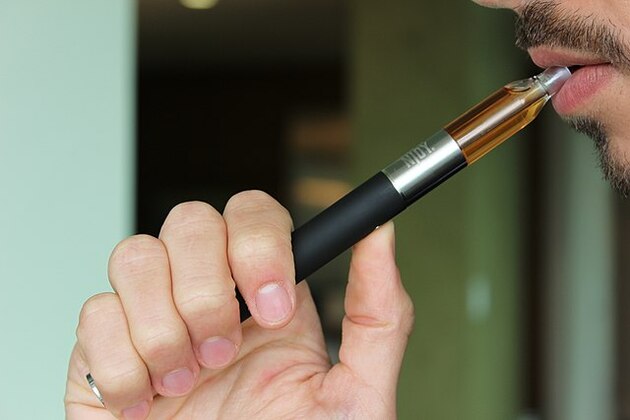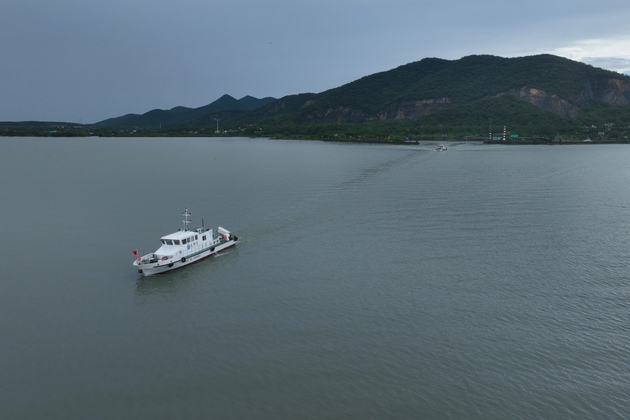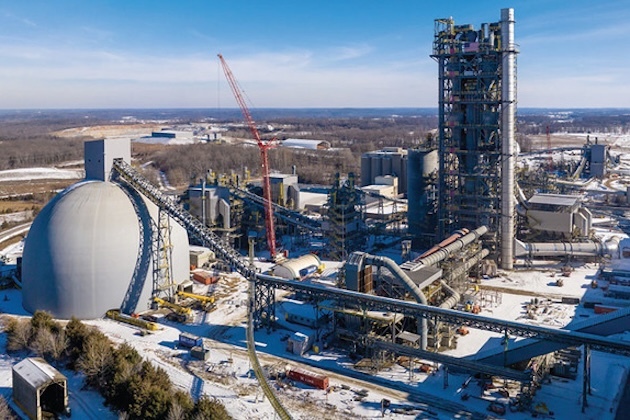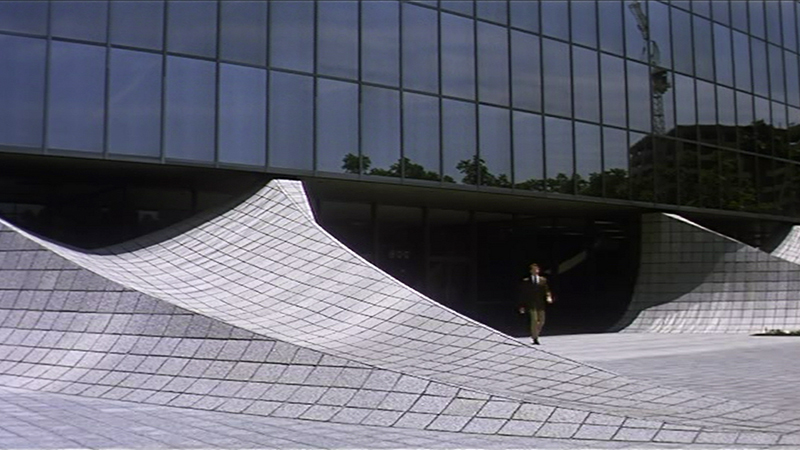Tech innovations fuel China's desertification fight
Xinhua
28 Jun 2025, 14:46 GMT+10
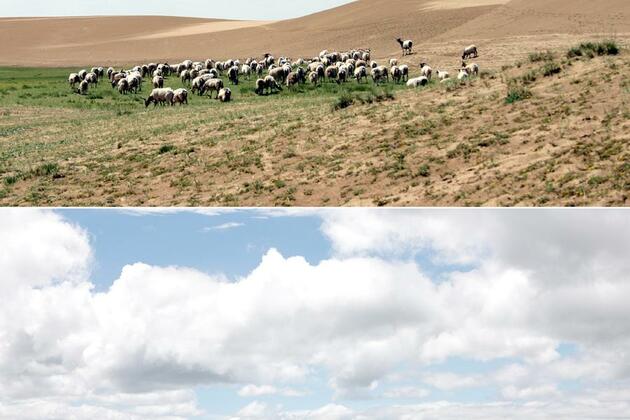
LANZHOU, June 28 (Xinhua) -- For decades, the people of China's arid northwestern region battled shifting sands with simple tools -- pressing straw into the desert to form grids that trapped the windblown grit. Today, scientists are deploying cutting-edge biotechnology, mechanized equipment, and recycled materials to reclaim the land at an unprecedented pace.
In the 1950s, straw checkerboards saved a section of the Baotou-Lanzhou Railway from being buried by dunes. Now, researchers at the Northwest Institute of Eco-Environment and Resources have supercharged this method using biological soil crusts -- a "living carpet" of cyanobacteria that is able to stabilize sand within 10 to 16 months.
"The crust acts like glue, locking sand in place while blocking invasive plants," said Li Xinrong, a researcher with the institute.
His team cultivates drought-resistant cyanobacteria to accelerate crust formation from over 10 years to just two to three years, which boosts shrub survival rates by up to 15 percent and significantly cuts costs. The technique, already covering over 4,000 mu (about 267 hectares) of sandy land in Ningxia, is now a key weapon in China's desert-control arsenal.
Li indicated that the technology, which targets the restoration of soil habitats, boasts several advantages, including a short construction period, high stability, high sand-fixing efficiency, excellent desertification control outcomes, broad applicability, and ease of operation.
"It is a powerful tool for China's efforts in combating desertification and represents one of the most advanced sand-fixing and near-natural ecological restoration technologies both domestically and internationally," Li noted.
In China's decades-long war against desert expansion, its latest weapon comes from an unexpected source: retired wind turbine blades.
A research team at the Dunhuang Gobi Desert Research Station under the Northwest Institute of Eco-Environment and Resources has pioneered a groundbreaking approach by repurposing these fiberglass blades into highly effective sand barriers.
Traditional sand control methods using straw or reed barriers, while effective to some degree, face limitations in China's harsh desert environments. These organic materials can easily degrade when exposed to the region's extreme climate conditions.
The turbine blade solution overcomes the weakness through remarkable material properties. After extensive testing including UV aging, thermal cycling, erosion, and flexural strength assessments, the researchers found their engineered barriers demonstrate an excellent bending strength that is 14 times greater than wood composites, as well as exceptional resistance to thermal stress and UV degradation.
Scientists are optimistic that this innovation will play a particularly significant role in protecting critical infrastructure, such as highways and railways that traverse desert regions. Field applications are currently being conducted in the hyper-arid Dunhuang City to check its results.
Meanwhile, this innovation addresses two critical environmental challenges simultaneously -- combating desertification while finding sustainable uses for renewable energy infrastructure waste.
This technological breakthrough forms part of China's comprehensive, science-driven strategy against desertification. According to National Forestry and Grassland Administration data, such innovations and the long-established measures have contributed to the protection of 538 million mu of vulnerable land and the reclamation of 118 million mu of desert areas nationwide.
These scientific concepts are increasingly gaining deep-rooted acceptance and effectively guiding the ecological construction in desert areas, notes Lu Qi, a leading desertification expert at the Chinese Academy of Forestry.
"Looking to the future, technology, as the engine, booster, and accelerator of ecological construction, will further propel the development of sand and desert control efforts and contribute Chinese strength to global desertification governance," Lu added.
 Share
Share
 Tweet
Tweet
 Share
Share
 Flip
Flip
 Email
Email
Watch latest videos
Subscribe and Follow
Get a daily dose of Hong Kong Herald news through our daily email, its complimentary and keeps you fully up to date with world and business news as well.
News RELEASES
Publish news of your business, community or sports group, personnel appointments, major event and more by submitting a news release to Hong Kong Herald.
More InformationChina
SectionStarbucks refutes media report on plans to exit China
SEATTLE, Washington: U.S. coffee company Starbucks has said it is not planning to sell all of its business in China, even though a...
How Chinese vapes reach US stores despite import restrictions
LONDON/NEW YORK/CHICAGO: In suburban Chicago, just 15 minutes from O'Hare International Airport, a small customs brokerage quietly...
Monsoon floods batter China, raising climate concerns
BEIJING, China: Extreme weather is once again testing China's resilience, as intensifying monsoon rains trigger floods across major...
Naval fleet led by Shandong aircraft carrier to visit Hong Kong
BEIJING, June 28 (Xinhua) -- Approved by the Central Military Commission, a naval fleet led by the aircraft carrier Shandong will visit...
Focus | World's first pure ammonia-fueled demonstration vessel completes maiden voyage in China
(250628) -- HEFEI, June 28, 2025 (Xinhua) -- An aerial drone photo taken on June 28, 2025 shows the pure ammonia-powered demonstration...
Zelenskyy calls for restricting supply of AI models suitable for military use to Russia
Kyiv [Ukraine], June 28 (ANI): Ukrainian President Volodymyr Zelenskyy has emphasised the need to impose restrictions on the supply...
Business
SectionMeta wins lawsuit in California court over AI use of authors’ books
SAN FRANCISCO, California: A U.S. judge has dismissed a copyright lawsuit filed by 13 authors against Meta Platforms, the company that...
From 2028, top earners in Oman will face 5% income tax
DUBAI, U.A.E: Oman is set to introduce a personal income tax as part of its strategy to reduce dependency on hydrocarbon revenues....
U.S. stocks surge despite Trump rift with Canada
NEW YORK, New York - U.S. President Donald Trump dropped a bombshell on Friday announcing he had terminated trade talks with Canada....
United Steelworkers Union chief slams Trump over IRA move
Federal officials, then-Governor of Indiana Eric Holcomb, union leaders, company representatives, and dozens of guests assembled at...
Rent freeze fears hit NYC banks, landlords as Mamdani leads
NEW YORK CITY, New York: New York City's financial markets reacted sharply this week as shares of local banks and real estate investment...
Starbucks refutes media report on plans to exit China
SEATTLE, Washington: U.S. coffee company Starbucks has said it is not planning to sell all of its business in China, even though a...


